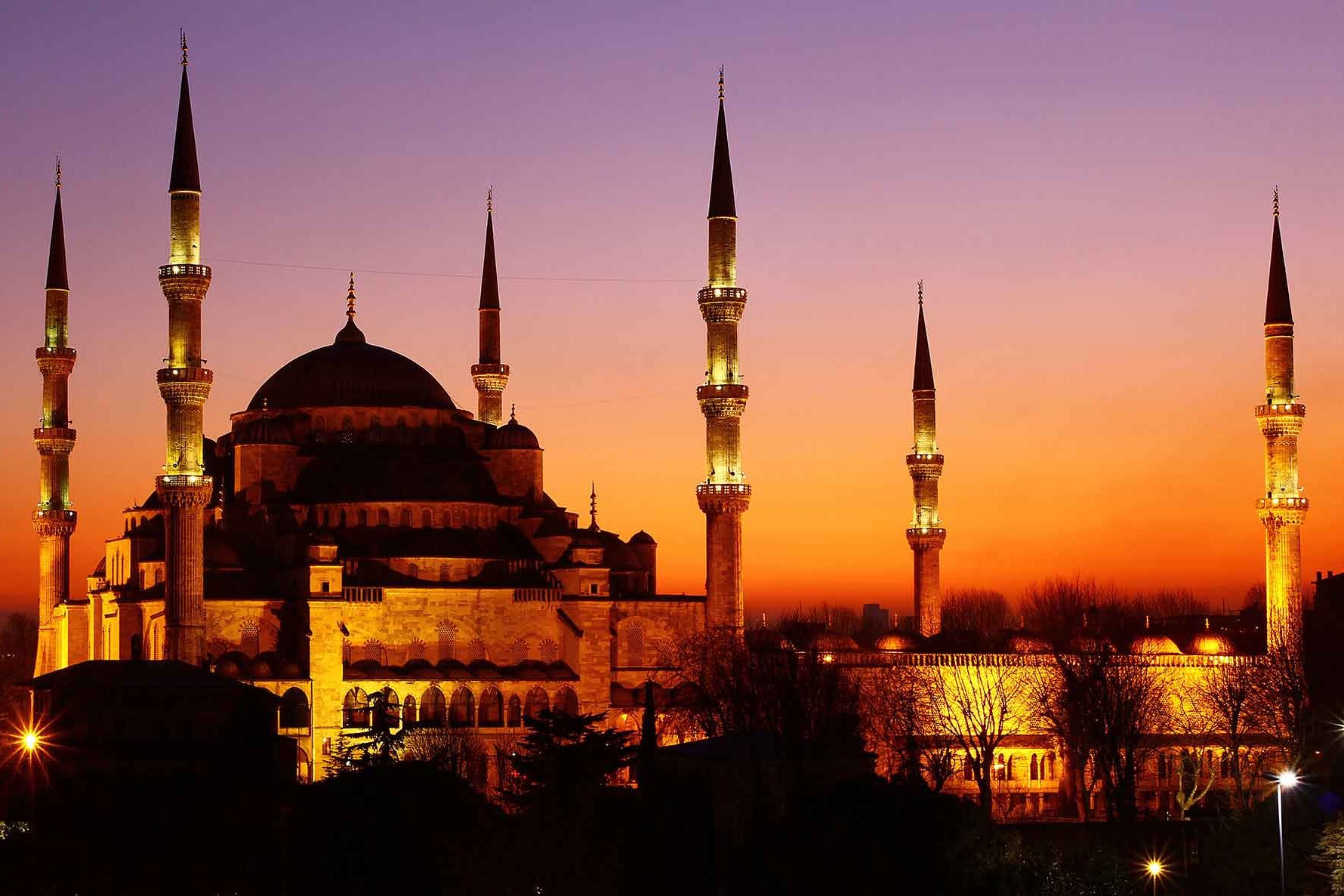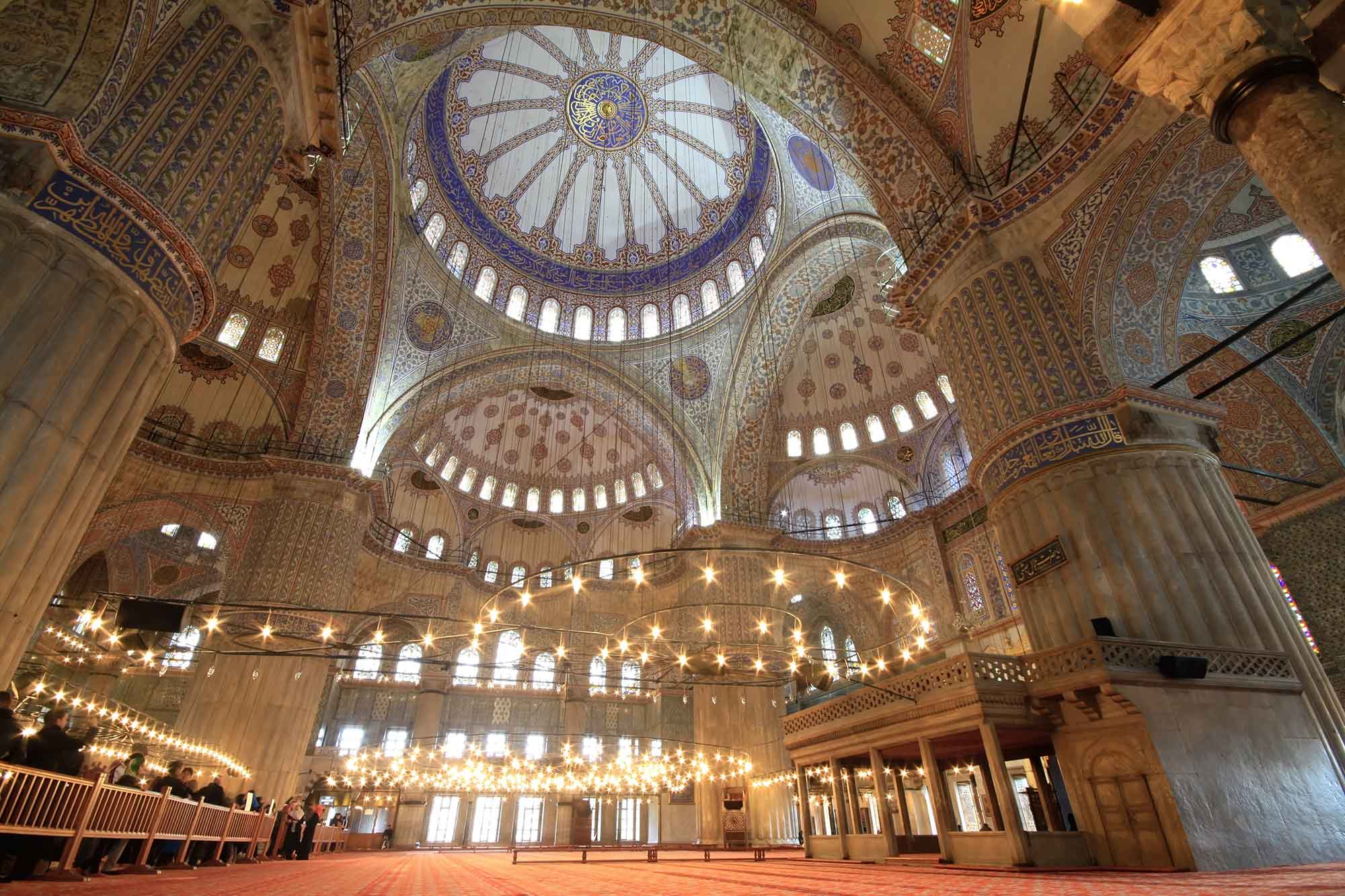Blue Mosque - Sultanahmet Mosque
While even the view of Hagia Sophia is enough for us to fall in love with Istanbul, the Sultan Ahmet Mosque, which is right next to it, can carry our attachment to a completely different dimension. Sultan Ahmet Mosque; is one of the most visited works of the historical peninsula with its story, architectural features, location, and history challenge. Due to the color of the magnificent patterns adorning its interior walls, this place is also known as the “Blue Mosque” among foreign tourists. Let’s take a closer look at the magnificent detail of Istanbul, which made a difference in Turkish Islamic architecture in the past years and still maintains this difference with its features.
Blue Mosque Features In Detail
Contrary to popular opinion, the architect of the Sultan Ahmet Mosque is not Mimar Sinan, but it is a fact that he inspired his beauty. The architect of the mosque is Sedefkar Mehmet Ağa, one of the students raised by Mimar Sinan. The mosque, built by Sultan First Ahmet in the 17th century, was built between 1609-1616. The sultan laid the foundations of the mosque, by the young sultan Ahmet I, who is known for his strong spiritual side. 1. The pickaxe used by Ahmet during the groundbreaking is being exhibited in Topkapi Palace today.
When giving information about the Blue Mosque, perhaps we should have started by saying that it was the first and only six minaret mosque in the Ottoman borders. This detail constitutes the story of the Sultan Ahmet Mosque and one of the essential features that distinguish it from other works. Although this situation added magnificence to the mosque, it was criticized at first because the only six minaret mosques in the world were in Kaaba until that time. The sultan, who could not be insensitive to the rumors that this situation was disrespectful to the holy place, solved the event by erecting the 7th minaret to the Kaaba. The Blue Mosque minarets brought a breath of fresh air to traditional Islamic architecture. Despite the plain minarets in the Islamic geography, the decorations in the minaret of this mosque attract attention.


A Magnificent Detail: The Courtyard of the Mosque
While giving information about Sultan Ahmet Mosque, you should not miss the other exterior features of the mosque. The design of the Blue Mosque is a synthesis of Ottoman mosque architecture and Byzantine church architecture. We can see that the mosque is inspired by the Hagia Sophia right next to it. The courtyard of this mosque, whose architectural features summed up with magnificence and grandeur, is as large as the mosque. There is a heavy cord made of iron at the western entrance of the courtyard. Some historians said that they made this cordon to show that the sultan, who entered the courtyard with his horse, bent to avoid hitting his head and that even the sultan should arrange himself while entering the mosque.
Interior of Sultan Ahmet Mosque with Aesthetics and Splendor
The interior of the Sultan Ahmet Mosque came to life as a result of great effort. Let’s try to explain this with an example: The decorations of the mosque consist of more than 20 thousand tiles with 50 different tulip patterns in Iznik. There are flowers, fruits, and cypresses on these magnificent tiles made by the tiles in Iznik. All these tiles create a deep blue, peaceful, and superb scenery. It is very reasonable for tourists to call the Blue Mosque here because the blue color is quite intense here. The details in the architecture of the mosque are solid. For example, the dome and ceiling decorations of the Blue Mosque are essential. It is so important that in 1985 it was a piece added to the UNESCO World Heritage List under the name of Istanbul Historical Areas (Zones historiques d’Istanbul). Apart from that, the rarest examples of calligraphy here also draw attention. Also, ostrich eggs have been placed in various parts of the carefully formed interior to prevent sprains.
One of the most critical elements in the mosque is the mihrab made of marble carved and carved with excellent artistry. In addition to the magnificence of the mihrab, which is surrounded by windows, the flawlessness of the interior’s acoustics ensures everyone can hear the voice of the imam even when the mosque is most crowded. So much so that architects still appreciate this feature.
Private Tours of Blue Mosque
If you are interested in visiting the Blue Mosque with an experienced private tour guide, please contact us! Our private tours are the best option to enjoy wonderful and complex sites such as the Blue Mosque.
Let us make your time in Istanbul a memorable one!